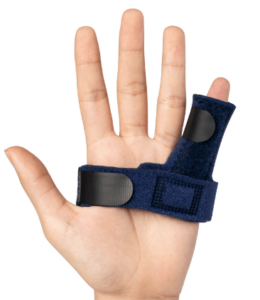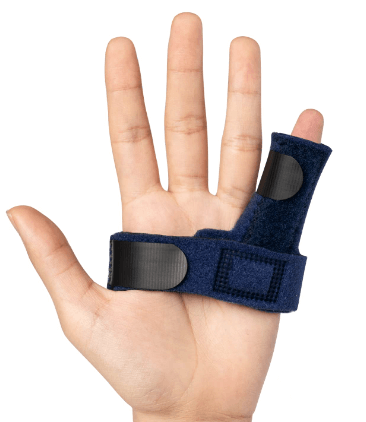If you are wearing a finger splint and have to travel, you may want to know if this will cause you issues through TSA controls. We have the answer for you: Yes, TSA allows it, but you may be subject to additional controls.

NOTICE: This article is intended for people traveling from or within the United States of America.In fact, the information I’m presenting here is based on guidelines from the Transportation Security Administration (TSA). It’s the agency that has authority over the security of the traveling public in the United States, and its rules apply whether you’re flying from or within the U.S.
What does TSA say about traveling with a Finger Splint on a plane?
TSA have a specific section to prothesis and braces in its website. It stipulates that it is not mandatory to remove finger splint appliances before screening. However, you must inform the TSA officer about its location. You have the option to voluntarily remove it and submit it for X-ray screening. If you choose not to remove them, additional screening procedures will be applied.
Here is a screeshot from the website :

Furthermore, someone asked this question on ‘X’ (formerly Twitter), and AskTSA support confirmed that it is allowed to wear a finger splint but additional screeing can be done.
Here is the tweet :
You may wear a finger splint through the screening process. Add’l screening may be needed. Pls see: https://t.co/axjmwbODzL
— AskTSA (@AskTSA) October 22, 2017
What about the rules for your destination?
Scroll through the list below to see if your destination has any restrictions for travelers. There is also other important information available, such as visa requirements and places to visit:
You can also get additional information about your destination: Customs, Currency & Airport Tax regulations by visiting the IATA Travel Center
Stay Updated on Travel rules with a finger splint
This page was Updated on September 19, 2024, based on TSA guidelines for this kind of items. We will keep you updated if there are any changes to this rule.For the most current guidelines, we recommend:
- Visit the TSA’s official page.
- Contact TSA on Twitter: @AskTSA
- Contact TSA on Facebook Messenger: https://www.fb.com/AskTSA
- Contact TSA via Apple Business Chat: AskTSA
- Send TSA a message: Text “Travel” to AskTSA (275-872)

I hope to simplify air travel for travelers for a smooth and hassle-free travel. I’m analyzing the latest TSA guidelines and penning down my travel experience, I enjoy hiking, reading about aviation history, and discovering new coffee shops in my hometown.

